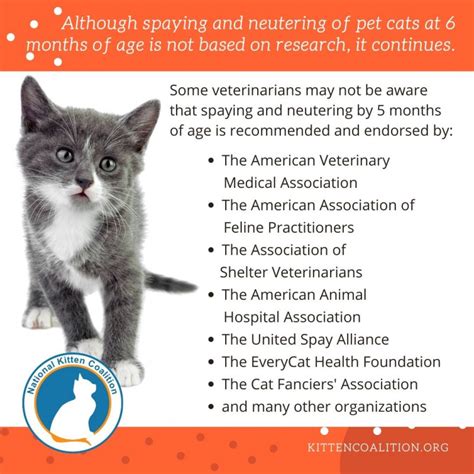The Kitten Spaying/Neutering Age Debate: A Comprehensive Guide for Responsible Pet Owners
The optimal age for spaying or neutering kittens is a subject of ongoing debate within the veterinary community. While traditional recommendations leaned towards waiting until six months of age, a growing body of evidence supports earlier intervention, often as young as eight weeks. This article delves into the complexities of this debate, exploring the pros and cons of early versus later sterilization to help you make an informed decision for your kitten's well-being.
What's the Traditional Recommendation for Spaying/Neutering Kittens?
Historically, veterinarians often advised waiting until a kitten reached six months of age before spaying or neutering. The reasoning behind this stemmed from concerns about potential growth retardation and the belief that the kitten needed to fully mature before undergoing the procedure.
Why is Early Spaying/Neutering (8 Weeks) Gaining Popularity?
The trend toward earlier spaying/neutering, often between eight and twelve weeks, is driven by several compelling factors:
- Reduced Overpopulation: Early sterilization dramatically reduces the number of unwanted kittens born, significantly impacting animal shelter populations and the euthanasia of healthy animals.
- Prevention of Unwanted Pregnancies: Kittens can become pregnant as young as four months old. Early sterilization eliminates the risk of accidental pregnancies, particularly in outdoor or multi-cat households.
- Reduced Risk of Certain Diseases: Spaying or neutering before sexual maturity can reduce the risk of certain cancers, such as mammary cancer in females and testicular cancer in males. It also eliminates the risk of pyometra (a life-threatening uterine infection in females) and prostate problems in males.
- Behavioral Benefits: Early sterilization can often mitigate certain behavioral issues like spraying (marking territory with urine) and aggression, common in unneutered male cats.
What are the Potential Risks of Early Spaying/Neutering?
While early sterilization offers many advantages, potential risks must be considered:
- Potential for slightly slower growth: Some studies suggest a slight decrease in adult body size in kittens spayed or neutered very early, though this is often minimal and varies greatly depending on breed and individual factors.
- Increased risk of certain conditions (rare): While very rare, some studies have shown a slight increase in the risk of specific health issues such as hip dysplasia in certain breeds when neutered very young. This is still a subject of ongoing research.
What are the Pros and Cons of Waiting Until 6 Months?
Pros:
- Complete Physical Maturity (Potentially): Allowing the kitten to mature fully might reduce the potential risk of some growth-related issues. However, this is debated within the veterinary community.
- More Time for Observation: Waiting allows time for observing the kitten for any pre-existing health conditions.
Cons:
- Increased Risk of Unwanted Pregnancies: The longer you wait, the greater the risk of unwanted litters.
- Delayed Disease Prevention: Postponing sterilization increases the kitten’s exposure to the risks associated with reproductive maturity.
- Increased Shelter Strain: Delayed sterilization contributes to overpopulation in shelters and the unfortunate euthanasia of adoptable animals.
How Do I Decide What's Best for My Kitten?
The decision of when to spay or neuter your kitten is best made in consultation with your veterinarian. They can consider your kitten's breed, health history, and individual circumstances to recommend the most appropriate time for the procedure. They can also discuss any potential risks and benefits specific to your kitten's breed and health.
What About the Cost?
The cost of spaying/neutering can vary depending on your location and veterinary clinic. Many organizations offer low-cost or subsidized spay/neuter services to help make this essential procedure accessible to all pet owners.
Are there any alternatives?
There are currently no viable alternatives to spaying/neutering for preventing unwanted pregnancies and reducing the risk of associated diseases.
In conclusion, the debate surrounding the optimal spaying/neutering age for kittens is complex. While traditional recommendations favored six months, the increasing evidence supporting early sterilization (between eight and twelve weeks) highlights the significant benefits in terms of population control, disease prevention, and behavioral management. Ultimately, the best course of action is to have an open and informed discussion with your veterinarian to determine the most appropriate time for your kitten, weighing the potential risks and benefits in their specific context.

